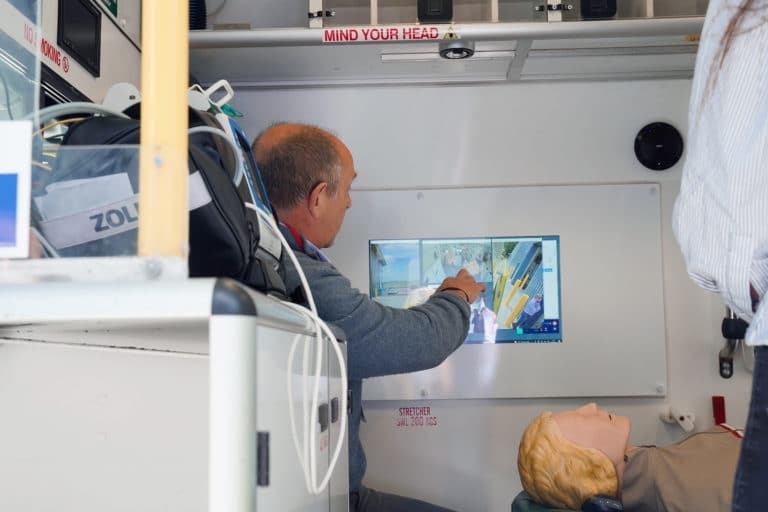Online collaboration has become part of everyday life for many workplaces, healthcare and the NHS included. But what are the best tips for a smooth and effective online meeting, especially when it involves complex collaboration?
Our tips provide ideas on how to ensure your online collaborations are efficient and effective for everyone involved.
1. Choose the right tool for your virtual meeting
There are so many options when it comes to online virtual meeting tools. It’s important to consider the different offerings each tool provides and choose the one that meets the needs of your virtual meetings.
For complex collaborations like MDT meetings, you might want a tool that allows for a large number of participants. Or, one with clinical grade imaging so that all participants can see evidence like scans and x-rays and make informed decisions in the same way they would if they attended in person. You can read our guide on choosing an online medical conferencing tool which highlights the features you should be considering.
2. Set up technology and equipment prior to the meeting
It’s important to avoid wasting anyone’s time by ensuring that equipment planned for use during the meeting is set up prior. Give yourself enough time to check technology is working and evidence is clear and comprehensible for all attendees.
You should also make technical help and support accessible for meeting attendees where possible. Your video conferencing supplier should be able to provide assistance to anyone struggling to connect or use the technology.
3. Decide on online meeting etiquette
Complex collaboration is always going to be more effective if there is turn taking, active listening and clearly communicated expected behaviours. Virtual meetings need an adherence to etiquette even more so, given they reduce the ability for participants to react to social cues.
Whatever etiquette rules you decide on, ensure these are shared before the meeting and again at the beginning to establish the best collaborative online environment possible.
Consider employing the following rules:
- Arrive on time
- Take turns to speak
- Use the ‘raise hand’ function to make comments
- Ensure the space you’re using is quiet, without distraction and confidential
4. Adopt a mandatory video-on policy
There are a lot of benefits to virtual meetings: logistics, less time travelling, the money saved etc. However, there is one distinct disadvantage: the loss of some nonverbal social cues you get from being face-to-face. One of the best ways to combat some of the effect of this is to adopt a mandatory video-on policy; it will help the team bond and collaborate and will encourage more effective communication.
5. Prepare an agenda and structure carefully
Preparing and distributing an agenda before any meeting helps efficient collaboration. For virtual meetings, an agenda also helps to quash any concerns regarding what might be expected of attendees prior to the meeting.
An agenda should highlight specific time allocations for feedback and questions ensuring meetings flow, whilst still allowing for reflection and effective decision making. When creating an agenda, set aside time for feedback, questions and decision-making, and send the agenda out prior to the meeting.
6. Acknowledge everyone in the meeting
If you’re chairing a virtual meeting, it is important to employ a lot of the same techniques you would normally use to your online meetings.
Some people may find digital collaboration embarrassing, awkward or uncomfortable especially in the beginning. Ask everyone to ensure their screen name reflects the name they would like to be referred to as during the meeting and to follow their name with their job title.
You could also begin your meeting by getting everyone to introduce themselves and their job role. This will help relax those present and encourage complex collaboration.
7. Plan and encourage questions
Plan out the structure of your meeting and make sure you have accounted time for questions. A virtual environment might make people less comfortable to ask questions. Equally, it might be more difficult to actively listen to answers when social cues are hampered, making it even more important that questions are encouraged.
If you’re chairing the meeting, ensure you ask regularly if anyone has any questions, and ask people to clarify comments if you feel it is needed.
Find out more about how Visionable can help your online collaborations.












